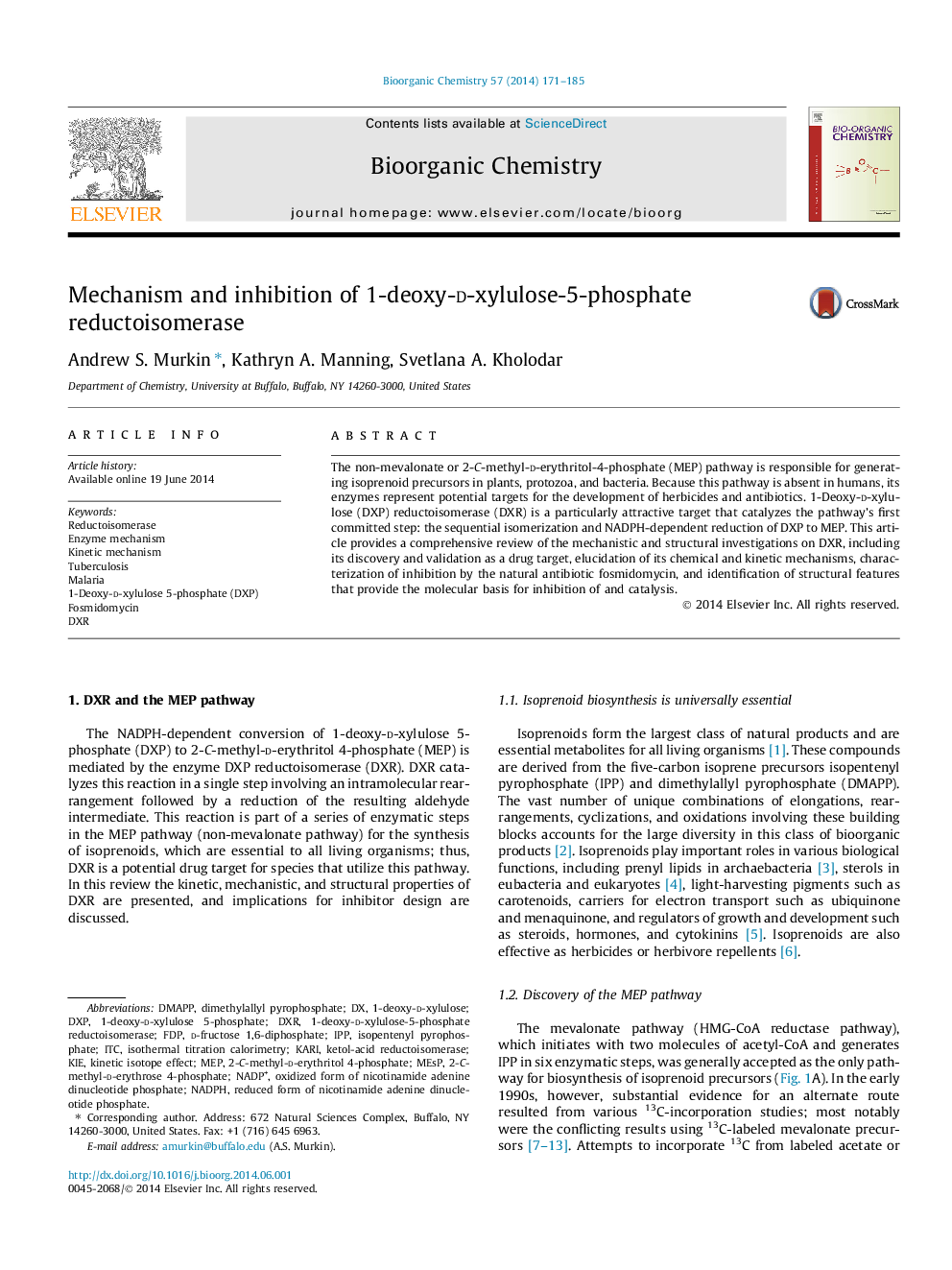| Article ID | Journal | Published Year | Pages | File Type |
|---|---|---|---|---|
| 1355924 | Bioorganic Chemistry | 2014 | 15 Pages |
•DXR is an antimicrobial and herbicide target involved in isoprenoid synthesis.•Chemical and kinetic mechanisms are discussed.•The nature of inhibition by fosmidomycin is evaluated.•Structural features related to catalysis and inhibition are described.
The non-mevalonate or 2-C-methyl-d-erythritol-4-phosphate (MEP) pathway is responsible for generating isoprenoid precursors in plants, protozoa, and bacteria. Because this pathway is absent in humans, its enzymes represent potential targets for the development of herbicides and antibiotics. 1-Deoxy-d-xylulose (DXP) reductoisomerase (DXR) is a particularly attractive target that catalyzes the pathway’s first committed step: the sequential isomerization and NADPH-dependent reduction of DXP to MEP. This article provides a comprehensive review of the mechanistic and structural investigations on DXR, including its discovery and validation as a drug target, elucidation of its chemical and kinetic mechanisms, characterization of inhibition by the natural antibiotic fosmidomycin, and identification of structural features that provide the molecular basis for inhibition of and catalysis.
Graphical abstractFigure optionsDownload full-size imageDownload as PowerPoint slide
